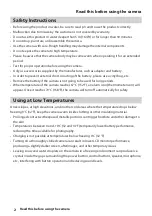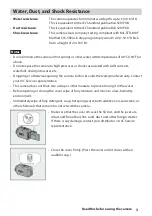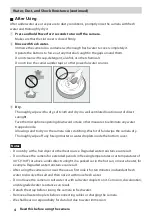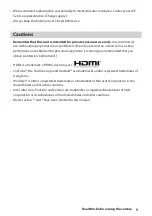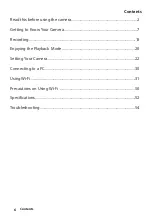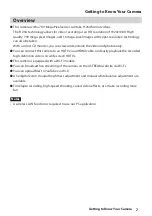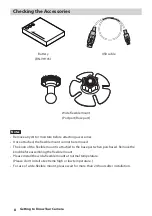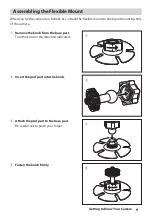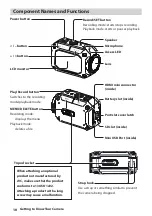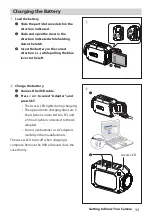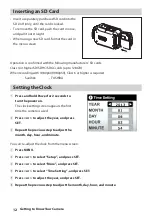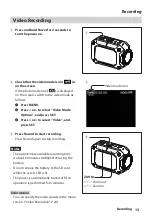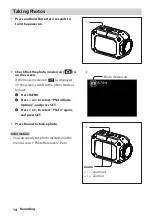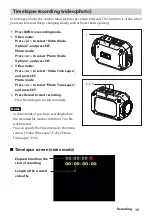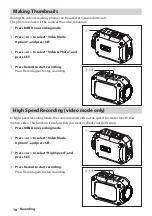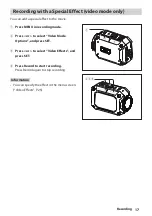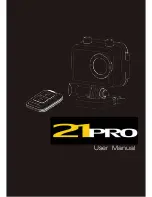
2
Read this before using the camera
Read this before using the camera
Safety Instructions
• Before using the product in water, be sure to read p.3 and to use the product correctly.
• Malfunction due to misuse by the customer is not covered by warranty.
• Do not use this product in water deeper than 5 m (16.4 ft) or for longer than 30 minutes.
• Do not drop, puncture or disassemble the camera.
• Use the camera with care. Rough handling may damage the internal components.
• Do not expose the camera to high temperature.
• Please be aware that the camera body may become warm when operating it for an extended
period.
• Test for proper operation before using the camera.
• Only use accessories supplied by the manufacturer, such as adapter and battery.
• In order to prevent external short circuiting of the battery, please use a vinyl bag, etc.
• Remove the battery if the camera is not going to be used for long periods.
• When temperature of the camera reaches 67°C (152°F), an alarm icon (thermometer icon) will
appear. Once it reaches 70°C (158°F), the camera will turn off automatically for safety.
Using at Low Temperatures
On ski slopes, at high elevations, and in other cold areas where the temperature drops below
freezing 0°C (32°F), keep the camera warm inside clothing or other insulating material.
• Prolonged contact with exposed metallic portions can trigger frostbite and other damage to
the skin.
• Temperatures between 0 and -10°C (32 and 14°F) temporarily lower battery performance,
reducing the time available for photography.
• Charging is not possible at temperatures below freezing 0°C (32 °F).
• Turning on a thoroughly chilled camera can result in lower LCD monitor performance,
producing a slightly darker screen, afterimages, and other temporary issues.
• Leaving snow and water droplets on the camera in a freezing environment can produce ice
crystals inside the gaps surrounding the power button, control buttons, speaker, microphone,
etc., interfering with button operation and reducing sound levels.


